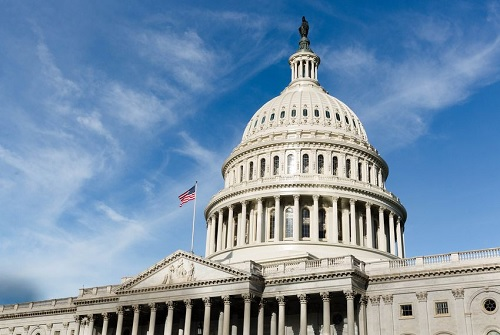Unit 7: Government Transformation: The 1920s and 1930s
Unit 7: Government Transformation: The 1920s and 1930s

Unit 7: Government Transformation: The 1920s and 1930s

Unit 7: Government Transformation: The 1920s and 1930s
Politics in the 1920s
With the end of World War I and the passage of the Eighteenth Amendment, Americans entered the distinctive 1920s — an era of Republican leadership, nationalistic and fundamentalist movements, and changing social conventions. Electing Republican presidents who favored business expansion rather than regulation, the American public enjoyed apparently unlimited prosperity, while fear of radicals and foreigners combined to almost completely close off America to immigration and contributed to the resurgence of hate groups such as the Ku Klux Klan. Religious fundamentalism revived as new moral and social attitudes came into vogue. Additionally, the first radio broadcasts and motion pictures expanded Americans' access to news and entertainment.
During the 1920s, three Republicans occupied the White House: Warren G. Harding, Calvin Coolidge, and Herbert Hoover. Harding was inept, Coolidge was mediocre, and Hoover was overcome by circumstances he neither understood nor could control. Harding's campaign slogan, “A return to normalcy,” aptly described American politics for the entire period. The nation turned away from the reforming zeal of the Progressive Era and the moral vision of Wilson's wartime leadership toward a government whose domestic economic policies opposed federal regulation and encouraged business expansion.
At the beginning of the 1930s, more than 15 million Americans–fully one-quarter of all wage-earning workers–were unemployed. President Herbert Hoover did not do much to alleviate the crisis: Patience and self-reliance, he argued, were all Americans needed to get them through this “passing incident in our national lives.” But in 1932, Americans elected a new president, Franklin Delano Roosevelt, who pledged to use the power of the federal government to make Americans’ lives better. Over the next nine years, Roosevelt’s New Deal created a new role for government in American life. Though the New Deal alone did not end the Depression, it did provide an unprecedented safety net to millions of suffering Americans.
This unit emphasizes the Roaring Twenties and the Great Depression of the 1930s.
Unit Focus
- Social transformations that took place in the 1920s and 1930s
- Principle political and economic factors that led to the Great Depression
- Legacy of the Depression in American society
- How cultural and technological characteristics can link or divide regions
- How personal, political, and economic rights reinforce each other
- How government taxes, policies, and programs affect individuals, groups, businesses, and regions
Vocabulary
Lesson Reading
Videos and Interactives (Click on Images to View Content)

